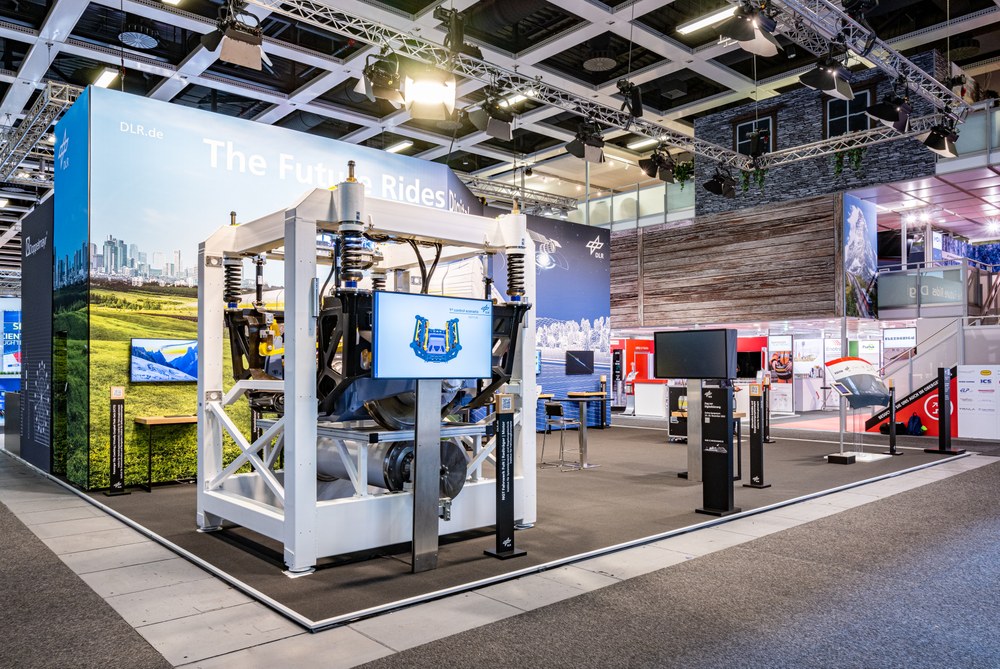Next Generation Train running gear
Our research into the train of the future - Next Generation Train (NGT), which has been ongoing since 2007, has resulted in a high-speed network for passenger transport that links the major cities of a continent or the major airports in Europe with the 400 km/h NGT HST and a capacity of approx. 800 passengers. In order to shorten the average journey times in the vicinity of the high-speed lines, these are connected by a 230 km/h feeder service, the NGT LINK. For cost reasons, rail transport in Europe runs over long distances as mixed transport (passenger and goods trains run on one route). This makes it attractive to transport time-critical goods in particular using high-speed transport. In order to design a suitable rail vehicle, the findings from the NGT HST were transferred to an ultra-high-speed NGT CARGO goods train. Our aim is to develop a quiet and operationally flexible railcar goods train that can run on a high-speed line with the NGT HST without restrictions and still allow the so-called "last mile" to be served.
The main drivers of this development are:
- Increasing energy costs and avoiding harmful emissions
- Increasing importance of the life cycle costs of a vehicle compared to the acquisition costs
- High demands on the safety of future vehicles
- Replacement of intra-European air traffic and thus shorter rail journey and freight transport times
- Increasing passenger demands in terms of vehicle comfort and the travelling process
The topics of emissions reduction and safety are highly relevant to society. Since 2007, the crystallisation theme "Next Generation Train" has been making valuable contributions to the existing lead of rail transport over other modes of transport and makes these widely visible through participation in conferences and biennial InnoTrans trade fairs.

